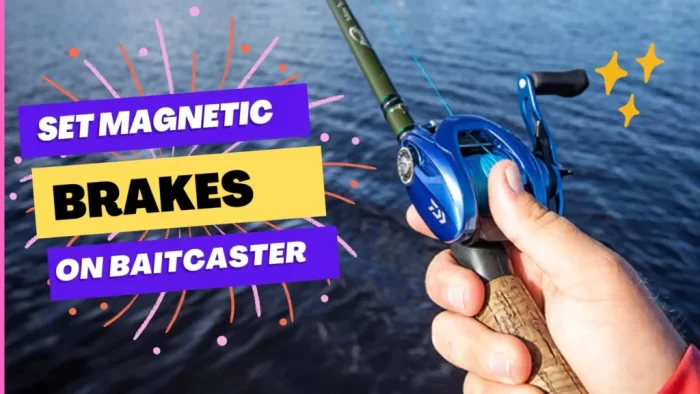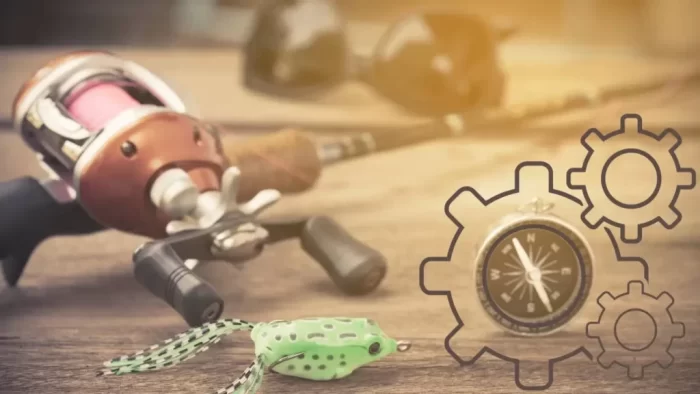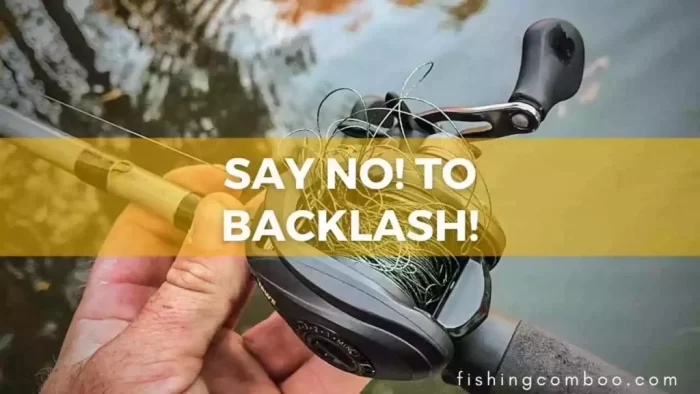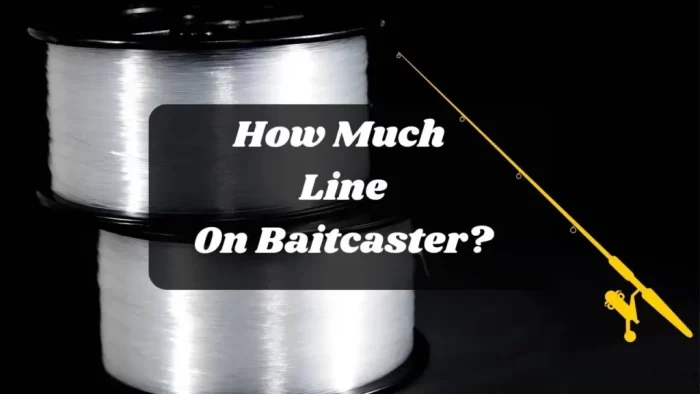
An avid angler knows the importance of choosing the right fishing tools. One of those essential tools is a baitcaster’s reel. But when outfitting a baitcaster with the line, it can be challenging to determine how much to use.
Many factors can influence the number of lines you’ll need. In this guide, we’ll talk about tips for determining how much line to put on a baitcaster to ensure you have the right setup for your next fishing trip.
table of contents
- 1 Explanation of Baitcaster Line Capacity
- 2 How Much Line To Put On A Baitcaster Explained
- 3
- 4 What Happens If You Put Too Much Line On Baitcaster?
- 5
- 6 Why is the Amount of Line You Put on a Reel Important?
- 7
- 8 Type of Line You Should Use on a Baitcaster
- 9
- 10 How Do You Put Line On A Baitcaster?
- 11
- 12 Do You Need To Put Backing On Your Baitcaster?
- 13
- 14 Frequently Asked Questions (FAq’s)
Explanation of Baitcaster Line Capacity
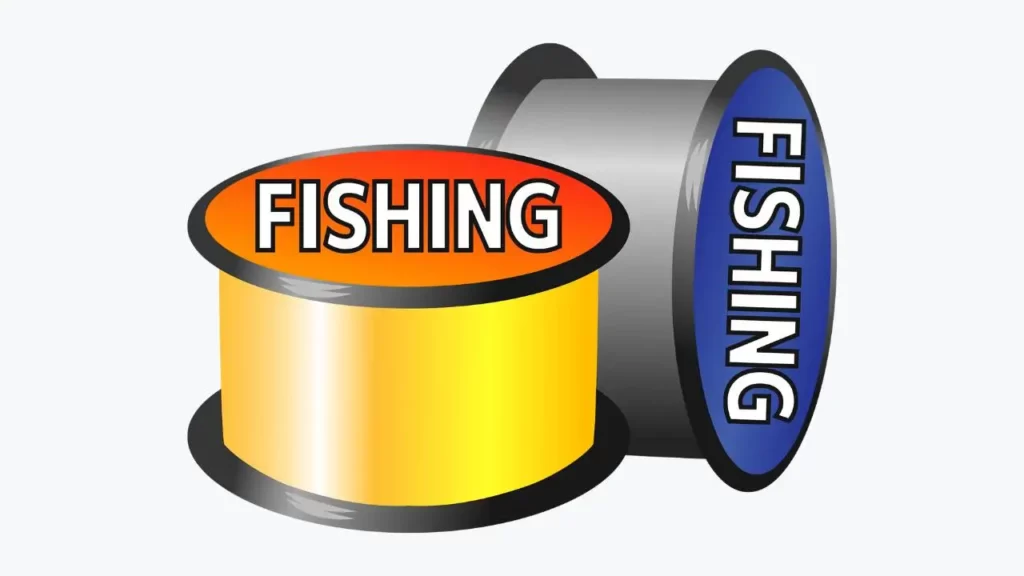
The amount of line a reel can hold is known as its “capacity” and is usually measured in yards or meters. How much fishing line is a controversial topic in the angling world. There are several factors to consider, including the type of fish, the size of your spool, and the action of your reel.
Baitcasting reels, also known as casting reels, are designed for fishing with heavier lines and lures. Baitcasters have larger spools, and a line guide positioned at the top of the reel, allowing anglers to cast accurately and farther than other fishing reels.
As the baitcasters are designed for heavier lines, they can be loaded with more lines than spinning reels. Fishing line type and spool size determine the maximum line a bait caster reel can hold.
How Much Line To Put On A Baitcaster Explained
The general rule is to fill your spool up to 1/8” below the top of the reel. This gives a good line on the spool while maintaining a reasonable level of backlashes when casting.
However, the amount of lines that a baitcaster can hold depends on the reel type, size, and line weight. As there’re two types of baitcasting reels, Low Profile and Round, the line capacity also varies.
Generally speaking, low-profile baitcasting reels are designed for lighter lines and lures and have smaller spools. This limits their line capacity to 100-150 yards of 10-20 lb test monofilament or braided fishing line.
On the other hand, rounded baitcasting reels have larger spools and can hold more lines. The amount of line this type of reel can hold ranges from 200-300 yards of 10-20 lb test monofilament or braided fishing line.
To ensure optimal casting performance and reduce tangles, anglers should fill their baitcasters with the minimum amount of line required for their type and size of reel.
As a general rule, when using light tackle, anglers should fill their baitcasters with only about 1/3 to 1/2 of the total capacity of the spool. For heavier lures or larger fish, they can fill up to 2/3 or 3/4 of the spool.
When it comes to baitcasting reels, having the right line on the spool is just as important as using a high-quality line. Too much or too little line can lead to tangles and poor casting performance.
That’s why anglers should always double-check their spools before going on a fishing trip. As a result, their baitcasting reels will perform better.
Related: Round Baitcast Reels vs Low Profile – Pros | Cons by Experts
What Happens If You Put Too Much Line On Baitcaster?

When it comes to baitcasting reels, having too much line on the spool can lead to casting issues like backlashes and wastage of fishing lines. If you put too much line on a baitcaster spool, the extra line will rub against itself as it turns inside the reel, causing a backlash.
The backlash will be created as the line wraps around itself multiple times, creating an irregular loop of a tangled fishing line. Untangling this can both be frustrating and time-consuming.
In addition to backlashes, putting too much line on your baitcaster spool can cause casting accuracy problems. With too much line in the spool, the reel will not be able to cast as far as it should. The extra line will add more weight, making the lure drift off target and affecting your casting accuracy.
As the extra line causes backlashes, it can also cause line wastage. Using braided lines that are more expensive may mean you have to pay an even more significant amount.
The best way to avoid these issues is only to use the amount of fishing line recommended for your reel size and type. As a result, your baitcaster will perform at its best and be as accurate as possible.
Our Reviews: 8 Best Baitcaster Rod and Reel Combo for Bass
Why is the Amount of Line You Put on a Reel Important?
The amount of line that you put on a reel is essential for several reasons:
Performance:
Having the right amount of line on your reel can affect the performance of your rod and reel. If the spool is too full, the line may not release smoothly, resulting in poor casting distance and accuracy. On the other hand, if the spool is too empty, the line may not have enough tension, which can cause slack and result in poor hook sets.
Read: How to Use a Baitcasting Rod Correctly
Safety:
Too many lines on a reel can be dangerous, as it can increase the risk of tangles and snags. It can also make it more difficult to control the line while casting and reeling, leading to accidents.
Storage:
Reels have a limited line capacity, and filling them up fully can make storing and transporting your equipment difficult. It can also make it more challenging to maintain your gear, as the excess line can become tangled or frayed over time.
Considering these factors, you can ensure that you use the right line on your reel for optimal performance, safety, and storage.
Type of Line You Should Use on a Baitcaster
Various fishing lines are available for baitcasting reels, each with its own benefits and drawbacks. A quick overview of the most common baitcasting lines is provided below:
Monofilament Line:

The monofilament line is famous for baitcasters as it’s versatile and cost-effective. A monofilament is a great option for anglers who want an all-around line that can handle multiple types of lures, from crankbaits to jigs.
It also has good knot strength and stretch, making it easy to work with. However, monofilament is not as abrasion-resistant as other lines and can fray easily.
Advantages:
- The monofilament line is highly resistant to tangles and knots and is easy to handle and work with.
- Budget-conscious anglers will find it an excellent choice since it is relatively inexpensive.
- The monofilament line is flexible and has a good stretch, which helps to absorb shock and reduce the chances of breaking the line.
Disadvantages:
- The monofilament line is less strong than other fishing lines and may break more easily under heavy loads.
- It is not as sensitive as other types of lines, making it more difficult to detect bites or feel the movements of the lure.
Fluorocarbon Line:
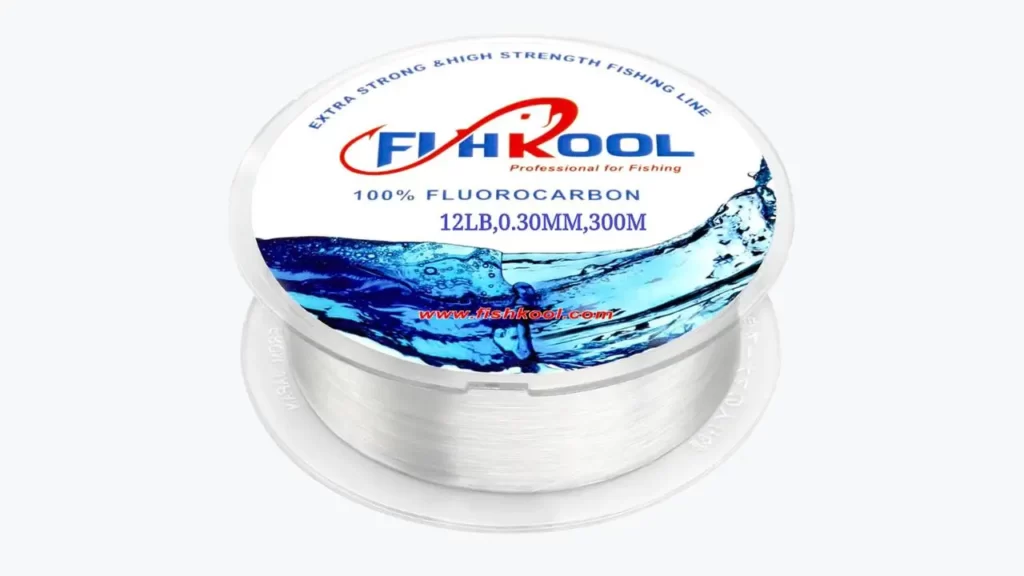
The fluorocarbon line is known for its abrasion resistance, making it a popular choice for anglers who need a tricky line that won’t wear down quickly. It also sinks faster than monofilament, which makes it ideal for fishing in deep water or around rocks and other obstacles. However, fluorocarbon line is more expensive than monofilament and can be difficult to tie knots with.
Advantages:
- The fluorocarbon line is much stronger and more durable than the monofilament line and can withstand heavy loads and sharp objects.
- When fishing in clear or shallow water, it is virtually invisible in the water.
- The fluorocarbon line is highly sensitive, which makes it easier to detect bites and feel the movements of the lure.
Disadvantages:
- A fluorocarbon line is more expensive than a monofilament line, which may not be practical for some anglers.
- It is more rigid and has less stretch than a monofilament line, making it more prone to breakages under heavy loads.
Braided Line:
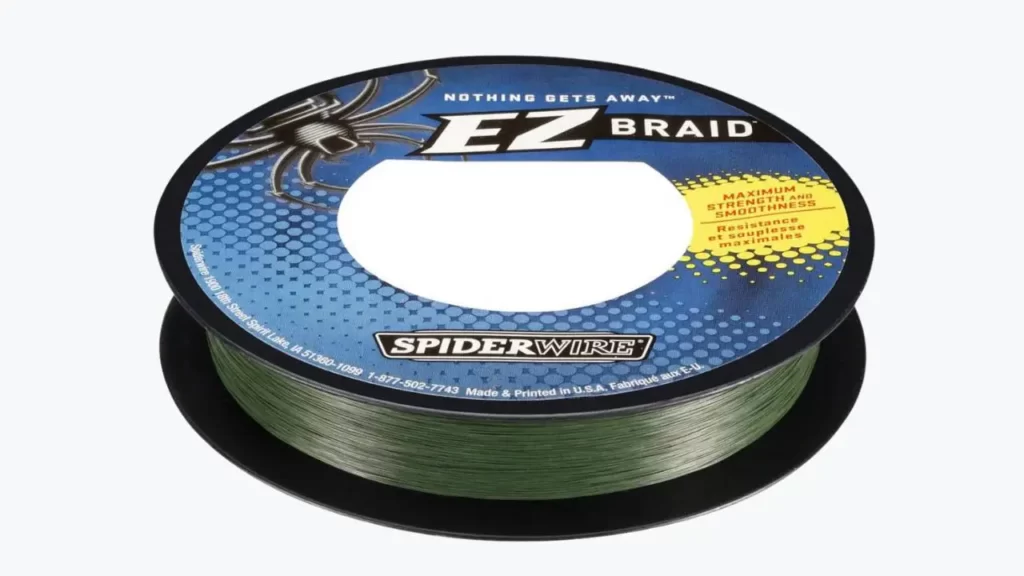
The braided line is extremely strong and abrasion-resistant, making it an excellent choice for anglers looking for a reliable line that can handle heavy lures. It is also very thin, which makes it more sensitive to bites and less visible underwater.
However, braided line is more expensive than other types of lines, and they can be challenging to work with due to their lack of stretch.
Advantages:
- The braided line is extremely strong and durable and can easily handle heavy loads and sharp objects.
- The line is thin and lighter than normal fishing lines, allowing for longer and more accurate casts.
- Because braided lines have virtually no stretch, they are highly sensitive and allow for precise bite detection.
Disadvantages:
- Braided lines are more expensive than other types of lines and may only be practical for some anglers.
- It is more prone to tangles and knots and requires more care and attention when handling and storing it.
Related: Best Baitcaster Line for Beginners
My Recommendation
We recommend using the braided line on a baitcasting reel for the best overall performance and value. The braided line is strong, abrasion-resistant, and sensitive, making it an ideal choice for anglers who want to get the most out of their baitcasting setup.
Despite its higher cost, it will last longer and perform better than other lines. Braided lines come in various colors, so you can customize your setup to match your fishing conditions.
How Do You Put Line On A Baitcaster?
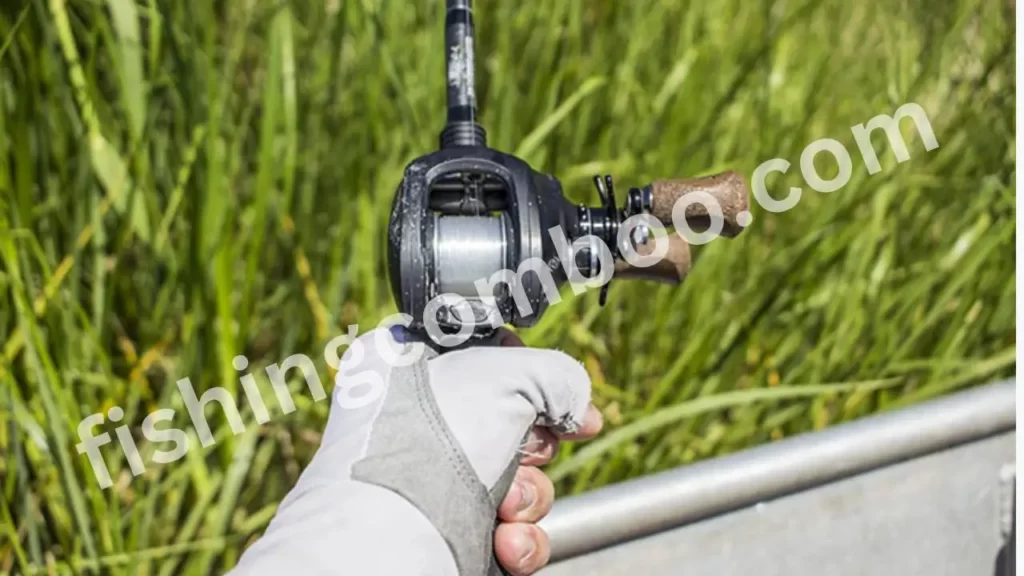
Putting a line on a baitcasting reel is a relatively simple process, but it is essential to follow the proper steps to ensure the line is spooled correctly and ready to use. Here is a step-by-step guide on how to put a line on a baitcasting reel:
- Start by attaching the reel to the rod using the reel seat, and ensure it is securely in place.
- Take the end of the line and thread it through the guides on the rod, starting from the tip and working your way down to the reel seat. Lines should run smoothly through the guides without catching on rough edges.
- Place the line on the reel’s spool by opening the bail arm (the metal arm holding the line in place). If the line is new and has yet to be used before, you may need to remove any excess packaging or packaging material from the line before spooling it.
- Begin spooling the line onto the reel by holding the line with your index finger and thumb and turning the handle with your other hand. Be sure to keep a steady and even tension on the line as you spool it, and avoid allowing the line to become tangled or overlap itself on the spool.
- Once you have spooled the desired line onto the reel, you can stop and trim the excess line using scissors or a line cutter. Be sure to leave enough lines on the spool to allow for a few feet of slack, as this will help to prevent the line from breaking when you start casting.
- Assure that the bail arm is closed and that the line is correctly seated on the spool. If the line is not seated evenly, you may need to adjust it using your fingers or a line picker manually.
- As a final step, you will need to adjust the drag setting on your reel to correspond to the size and strength of your target fish. The drag setting determines how much resistance the line will have as it is being pulled off the spool and is an essential factor in preventing the line from breaking.
Following these steps, you can quickly and efficiently put a line on a baitcasting reel and ready it for use. You will become more proficient and efficient at spooling lines onto a baitcasting reel with practice.
Related: How to Put Fishing Line on a Baitcasting Reel
Do You Need To Put Backing On Your Baitcaster?
The backing is an extra line layer placed on your reel before the main line. It serves to provide additional line capacity, as well as help reduce abrasion and wear on the main line. Backing also helps prevent tangles when casting.
Generally speaking, you do not need to put a backing on your baitcasting reel. However, if you are fishing in an area with a lot of debris or rocks in the water, adding backing may be beneficial as it can help protect the main line from abrasion and snags.
Frequently Asked Questions (FAq’s)
How much backing line does a Baitcaster need?
You need different amounts of the backing line for different types and sizes of baitcasters, depending on what you are fishing for. In most cases, 10 to 20 yards of backing will be sufficient.
How do I know if my baitcaster has too much line?
If your baitcaster has more lines than you need, it will be difficult to cast and may become tangled more easily. You should check the number of lines on the reel before each use to ensure it is manageable. Overfilling a reel can cause damage to the spool, as well as reduce accuracy when casting.
Is 10 pound braid good for Baitcaster?
No, a 10-pound braid is not ideal for baitcasting. It may be too light for most applications and could lead to tangles or breaks in the line when casting. A medium-weight braided line, such as a 20 to 30-pound test, is a better option for baitcasters.
Conclusion
There you have it! How much Line should be on a Baitcaster is an integral part of the fishing process. It can be tricky, but with practice and patience, you can master it in no time. Be sure to check the number of lines on your reel before each use and adjust the drag setting for the size and strength of the fish you target. This guide helps you get the most out of your baitcasting reel!


